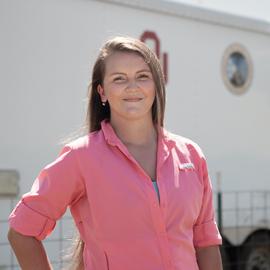Abstract
Unmanned aircraft systems (UASs) provide unique observations not readily available from piloted aircraft or ground- and satellite-based remote sensors. For example, they can reach difficult to observe areas in the Arctic (Reuder et al. 2012; de Boer et al. 2016b, 2018), in tropical cyclones (Cione et al. 2020), and within the atmospheric boundary layer (Jacob et al. 2018), and provide more routine measurements over a longer time range with repetitive vertical and horizontal profiles than piloted aircraft can. Furthermore, there are many scientific applications of UASs that go beyond weather research, which can aid weather applications and, in some instances, draw from weather applications. Although recent efforts have accelerated the development of UAS platforms and instruments (e.g., Wildmann et al. 2014; de Boer 2016a; Barbieri et al. 2019; Bell et al. 2020), there is still considerable uncertainty in how to best acquire and use these observations for improving forecasts, how to integrate them with other observations currently being obtained, and to enable process studies to improve conceptual and numerical modeling of the atmosphere and its constituent gases, aerosols, pollutants, and hydrometeors. To initiate a community effort for addressing such issues and to build upon the efforts of other community groups, such as the International Society for Atmospheric Research using Remotely-Piloted Aircraft (ISARRA; http://isarra.org; de Boer et al. 2019), a workshop emphasizing the scientific applications of UASs was held at the National Weather Center (NWC) in Norman, Oklahoma, in October 2019 (all presentations are available at https://cimms.ou.edu/index.php/research/symposiums/symposium2019/). The workshop brought together diverse communities actively working on various aspects of UAS-based atmospheric science.
Publication
Bulletin of the American Meteorological Society, 101(8), E1322–E1328
Click the Cite button above to demo the feature to enable visitors to import publication metadata into their reference management software.

Research Meteorologist
Elizabeth joined NSSL as a research meteorologist in January 2020, where she focuses on boundary-layer processes relevant to near- and pre-storm environments and convection initiation.

Former Research Scientist
Elizabeth Pillar-Little was the Assistant Director for the former Center for Autonomous Sensing and Sampling at the University of Oklahoma, where she was responsible for coordinating the field deployments of RPAS teams from both an operational and scientific perspective. She also ensured the continuity of day-to-day center business and enjoyed spearheading outreach and science communication activities on behalf of the center. She was also appointed as a research scientist in the School of Meteorology and led the atmospheric chemistry research nucleus of CASS. Dr. Pillar-Little’s research interests were broadly centered around atmospheric and environmental chemistry, but she is very passionate about atmospheric composition, aerosol optical properties and composition, and the interplay between aerosols and convection initiation.

Research Meteorologist
My name is Jeremy Gibbs. I am a Research Meteorologist at the NOAA National Severe Storms Laboratory. My research includes computational and theoretical studies of atmospheric boundary-layer flows, turbulence modeling, land-surface modeling, parameterization of boundary-layer and surface-layer interactions, and multi-scale numerical weather prediction. I am currently working on projects to improve atmospheric models in the areas of scale-aware boundary-layer physics, heterogeneous boundary layers, and other storm-scale phenomena.